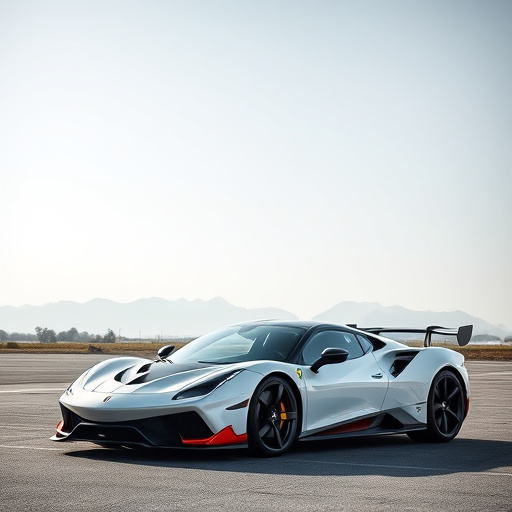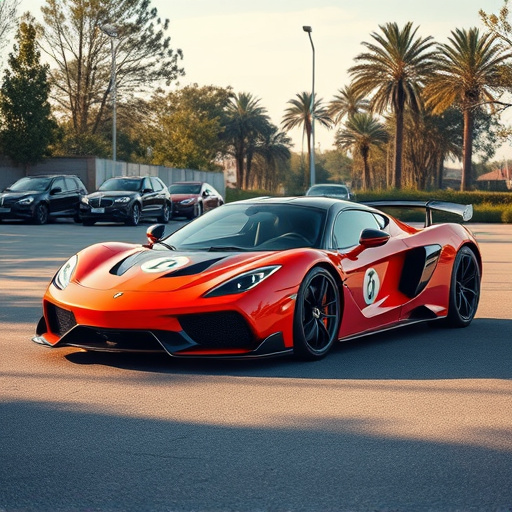Choosing between dry and oiled filter intakes is crucial for maximizing engine performance, with significant impacts on airflow and efficiency. Dry filters, while easier to maintain, lose efficiency over time due to dust buildup, restricting airflow. Oiled filters, though more expensive, trap finer particles and maintain consistent airflow by using a coated surface, offering improved engine health and fuel efficiency despite requiring regular oil topping up. The optimal choice depends on specific needs, considering initial costs versus long-term benefits for maximum performance.
In the pursuit of optimal vehicle performance, understanding the nuances between dry and oiled filter intakes is paramount. This article delves into the fundamental differences between these two types of air filters, specifically exploring their airflow restriction variances. We’ll dissect how each performs under various conditions, guiding you in making an informed decision for enhanced engine efficiency. By examining the pros and cons of both dry and oiled filters, drivers can choose the ideal setup for their needs, ensuring a smoother, more powerful driving experience with improved fuel economy.
- Dry Filter vs Oiled Filter Intakes: Understanding the Basics
- Effects of Airflow Restriction Variances with Each Type of Filter
- Choosing Between Dry and Oiled Filters for Optimal Performance
Dry Filter vs Oiled Filter Intakes: Understanding the Basics

In the realm of airflow restrictions, the choice between a dry filter and an oiled filter intake is a key consideration for optimal performance. Dry filters, as the name suggests, rely solely on a fabric or paper medium to trap particles. They are typically easier to maintain, requiring regular replacement of the filter media. However, they can restrict airflow more significantly over time due to buildup of trapped contaminants, leading to reduced engine efficiency.
On the other hand, oiled filters use a combination of a fine mesh and a thin layer of oil to capture particles. The oil not only lubricates the filter elements but also helps to trap smaller debris, allowing for a broader range of particle sizes to pass through while still providing efficient filtration. While initial maintenance can be slightly more involved due to regular oil topping up, oiled filters offer sustained performance and can withstand higher air flows, making them a preferred choice in environments with fine dust or larger particulate matters.
Effects of Airflow Restriction Variances with Each Type of Filter

Airflow restriction variances significantly impact performance, particularly when comparing dry filters and oiled filter intakes. Dry filters, characterized by their unlubricated design, allow for unrestricted airflow initially but face challenges as dust and debris accumulate. This buildup leads to a gradual decrease in air flow, affecting engine efficiency. In contrast, oiled filters are designed to capture particles while allowing oil to lubricate the media, ensuring smoother airflow even under heavy loads. The oil acts as a lubricant, preventing the filter from restricting airflow as quickly as its dry counterparts.
The effect of these variances is noticeable in real-world applications. In high-performance engines, for instance, oiled filters maintain optimal airflow, enhancing engine power and fuel efficiency. Conversely, dry filters may struggle to keep up with demanding conditions, leading to reduced performance and potential engine strain. These differences underscore the importance of choosing the right type of filter based on specific needs, ensuring the engine operates at its best without undue restrictions.
Choosing Between Dry and Oiled Filters for Optimal Performance

When it comes to airflow restrictions, the choice between a dry and oiled filter intake is crucial for optimal performance. Dry filters are straightforward in design, relying on a fibrous material to trap particles. They are efficient at capturing larger debris but can become less effective over time as dust and dirt accumulate, leading to restricted airflow.
Oiled filters, on the other hand, use a unique approach by coating their surfaces with oil. This not only improves their ability to capture finer particles but also allows for a more even flow of air. While initially more expensive, oiled filters can provide better engine performance and fuel efficiency due to their enhanced airflow dynamics. They require regular maintenance, such as periodic cleaning or replacement of the oil, to maintain their optimal performance.
In the realm of automotive performance, understanding the nuances between dry and oiled filter intakes is key. Both have their unique advantages and considerations regarding airflow restriction variances. By exploring these differences, car enthusiasts can make informed choices to optimize engine efficiency. Whether prioritizing efficient air intake or seeking enhanced power output, knowing the impact of each filter type empowers users to enhance their vehicle’s overall performance. In terms of dry vs oiled filters, the decision now boils down to personal preferences and specific driving needs.














